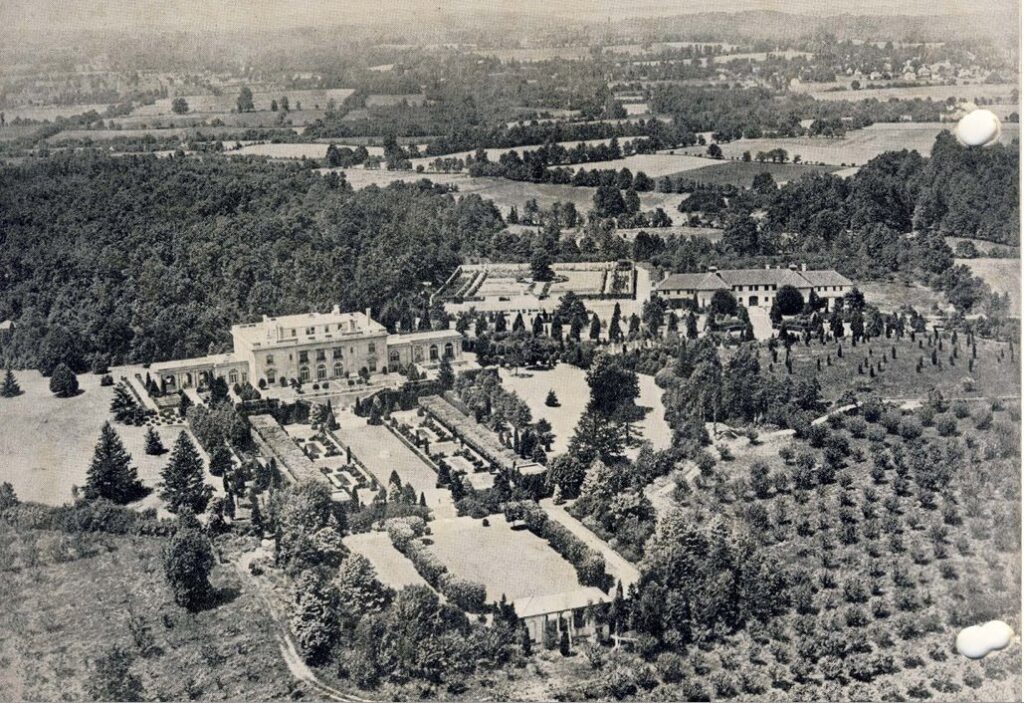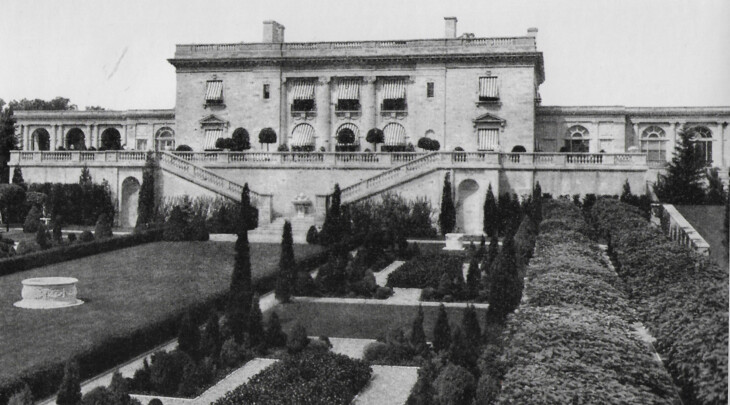If you live on the north shore of Long Island, you’ve likely heard of King Zog’s ruins and the rumors of lost treasure that surround the abandoned site. Tucked away in the Muttontown Preserve in Muttontown, New York, these ruins were once part of the former Knollwood Estate – a Gold Coast mansion that was purchased by King Zog I of Albania. The king intended on turning the estate into his kingdom in exile, however, he would never get to live in it.

The Knollwood Estate, as it is officially known, was constructed in 1910 for Wall Street mogul Charles I. Hudson. Knollwood sat on some 270 acres, which are now part of the current-day Muttontown Preserve on the Gold Coast of Long Island. The estate was designed in an Italian Renaissance architectural style by New York City firm Hiss and Weekes – who specialized in Manhattan hotels and apartment buildings. The grounds of the estate were designed by landscape architect Ferruccio Vitale – most known for his design of the Washington Monument Gardens and National Mall in Washington D.C.


After the Hudsons sold the house, it passed through a handful of owners – the most notable being King Zog of Albania. King Zog was born Ahmet Muhtar Bej Zogolli in 1895. He attained control of Albania and became President after World War I, eventually declaring himself King in 1928. When World War II began, Italy – being part of the Axis Powers – invaded Albania, forcing King Zog, his wife, and his newborn son to flee the country. They escaped to Greece and England before finally landing in Egypt. The family allegedly carried with them a large portion of Albania’s gold. After the war, Zog and his family flew to America for the first time, touching down in New York on July 26, 1951. The New York Times reported it as a pleasure visit, though King Zog was searching for a place where he could establish his ‘kingdom in exile.’
Enter the Knollwood Estate. King Zog purchased the mansion for $102,800 – although it was widely rumored that he bought it with a bucket of diamonds and rubies. Said the New York Times of the purchase, “A man must have a place to lay his head…and if Zog feels he must have sixty rooms to do it in, that is his business.” Owning a residence in New York meant that King Zog and his family would have an easier time emigrating to the U.S. His dreams of living like an aristocratic landowner on Long Island’s Gold Coast would come to fruition by bringing with him over 100 servants and their families to maintain and farm the estate. Immigration authorities, however, would only allow him to bring 35 into the country, thus delaying the entire process. By 1952 Zog was forced to pay $2,914 in taxes to save Knollwood, having been unable to convince Nassau County that as a monarch he had “sovereign immunity from such trifles.”

The following year, Egyptian authorities raided King Zog’s villa in Alexandria, arrested him, and confiscated his gold reserves. They declared that Zog failed to declare his assets or pay any taxes during his stay in their country. He later fled to France with his family, becoming too ill for a transatlantic voyage back to his Knollwood Estate. During this time, the mansion suffered significant damage from vandals searching for the alleged treasure that was used in part to purchase the property. Zog sold Knollwood to mining magnate Lansdell Christie who had the mansion torn down sometime in 1955. King Zog passed away in Paris in 1961.
Today, the remains of the Knollwood Estate are nested away in the Muttontown Preserve in Muttontown, New York. Check out the video at the of this article to learn more and see what the ruins of the estate look like today, and join John Lazzaro for a talk on the abandoned sites of the Hudson Valley on September 6th!
Next, check out 30 Abandoned Places in NYC and Remnants of an Abandoned Tunnel From the Subway to the Brooklyn Bridge






